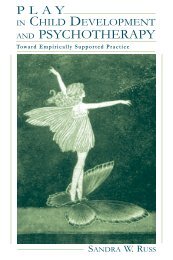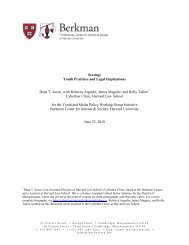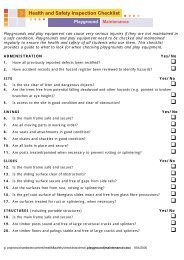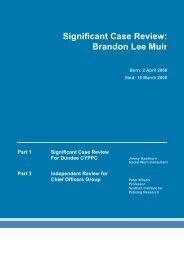Download PDF - Fair Play For Children
Download PDF - Fair Play For Children
Download PDF - Fair Play For Children
You also want an ePaper? Increase the reach of your titles
YUMPU automatically turns print PDFs into web optimized ePapers that Google loves.
16.<br />
We propose to help children play safely by:<br />
a. tackling bullying in public places;<br />
b. continuing to work with our partners to improve safety from crime on the streets;<br />
c. improving road safety in a number of ways, including a focus on improving skills and<br />
behaviour and creating a safer street environment; and<br />
d. increasing the availability of supervised play, including through working with the<br />
volunteering sector to test a new local volunteer infrastructure to support play.<br />
17.<br />
We will focus on risk and the benefits of play through:<br />
a. increasing parents’ knowledge and understanding of the risks and benefits of play;<br />
b. taking action to address negative perceptions of children and young people; and<br />
c. investigating whether excessive health and safety fears can cause local authorities to<br />
buy unstimulating and unpopular play equipment.<br />
Child-friendly communities<br />
18.<br />
19.<br />
20.<br />
Designated play areas must not be the only places where children are allowed or expected to<br />
play. It is important that the wider environment encourages play, and sometimes a pavement<br />
pattern or a grassy area can have as much play value as a piece of dedicated play equipment.<br />
<strong>Children</strong>’s needs should be reflected in the planning of local areas, and local communities<br />
should be empowered to be involved in these decisions.<br />
A community where children are playing is a healthy and sustainable community and, to<br />
support this, children need to be given the time, space, and opportunity to play. Yet children’s<br />
needs can be ignored in public space design, reducing the opportunities available for them<br />
to play outdoors. Similarly, play is often inappropriately moved away from housing and adult<br />
activity because of concerns about noise and nuisance from children’s play. We need to put<br />
an end to the culture of ‘no ball games here’. We are determined to make it the rule, not the<br />
exception, that children’s needs are reflected in local decision-making, and believe that this will<br />
encourage flourishing, confident and cohesive communities.<br />
We propose to make public space more child-friendly through:<br />
a.<br />
DCSF and DCMS working with the department for Communities and Local Government<br />
(CLG), the Department for Transport and others to include a stronger focus on spaces<br />
suitable for play in the planning system, including continuing to improve our parks and<br />
green spaces;<br />
b. a programme of activity to provide cross-professional training for people who design<br />
and manage public space; and<br />
c. making play a focus of flagship developments such as eco-towns, healthy towns,<br />
growth points and the Olympic Park.<br />
4 <strong>Fair</strong> <strong>Play</strong>: A consultation on the play strategy


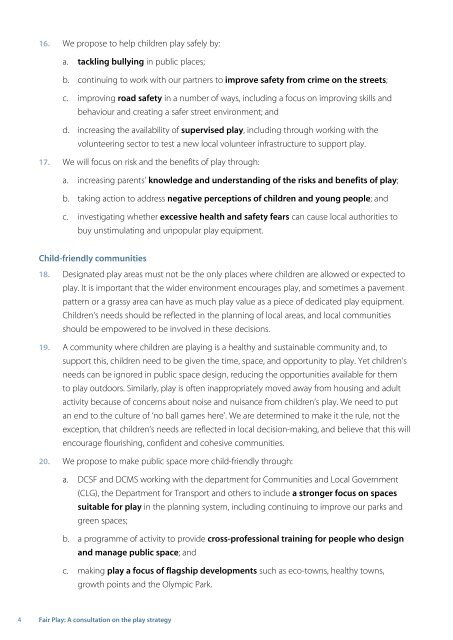
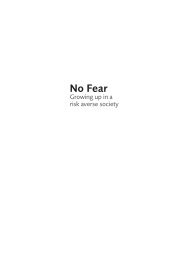
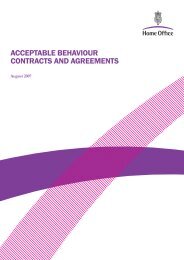
![The Childcare Act 2006 - Notes [Website] - Fair Play For Children](https://img.yumpu.com/50144819/1/184x260/the-childcare-act-2006-notes-website-fair-play-for-children.jpg?quality=85)




![Bouncy Castles [PDF] - Fair Play For Children](https://img.yumpu.com/45463572/1/184x260/bouncy-castles-pdf-fair-play-for-children.jpg?quality=85)

